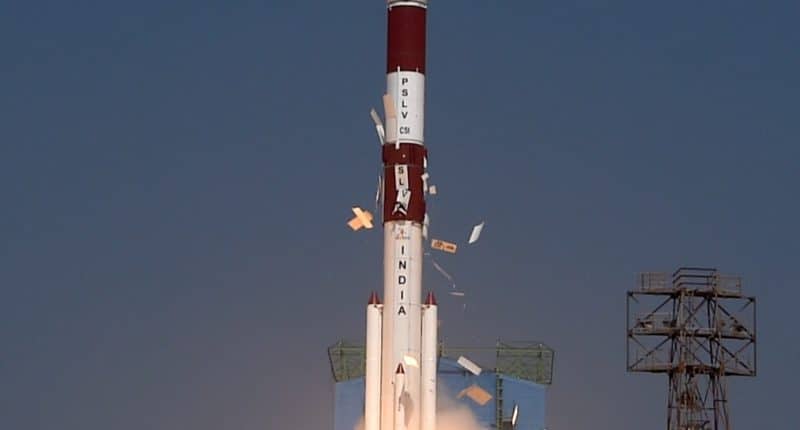The Indian Space Research Organization (ISRO) successfully made its first launch of the year on Sunday when its Polar Satellite Launch Vehicle (PSLV-C51) launched into space from the Satish Dhawan Space Centre (SHAR) at around 10:24 am. The PSLV-C51 carried 19 payloads, including Brazillian satellite Amazonia-1 and 18 other satellites from Sriharikota, including Satish Dhawan Sat (SD SAT) from Chennai-based Space Kidz India (SKI) a nanosatellite from ISRO, three UnitySats by an academic consortium, and a demonstration satellite by another start-up, Pixxel (incorporated as Syzygy Space Technologies).
After a flight of about 17 minutes, the PSLV injected Amazonia-1 into its intended orbit, and in the succeeding 1 hour 38 minutes, all the 18 co-passenger satellites were successfully separated from the PSLV in a predetermined sequence. Sunday’s launch also marks the first dedicated PSLV commercial mission for NewSpace India Ltd (NSIL), a government company under the Department of Space. The NSIL is undertaking this mission under a commercial arrangement with Spaceflight Inc, USA.
For the first time in the history of ISRO, Prime Minister Narendra Modi’s picture has been engraved on the top panel of the spacecraft Satish Dhawan Sat (SD SAT.) SKI-the creator of SD SAT, said that this was done “to show solidarity and gratitude for his (PM’s) Aatmanirbhar initiative and space privatization.” The names of ISRO chairperson Dr. K Sivan and scientific secretary DR. R Umamaheswaran have also been engraved on the bottom panel. The satellite also carries a digital copy of the “Bhagavad Gita” in an SD (secured digital) card.
ISRO chairperson K Sivan heaped praises on the efforts of the teams that built the satellites, saying that they were the result of the new space reforms announced by the government where ISRO promoted and handheld the teams. “I’m very sure this mission will enthuse other academic institutions and industries to build satellites,” he said.
Amazonia-1, the Brazilian satellite, is the optical earth observation satellite of the Brazilian National Institute for Space Research (INPE) and is set to provide remote sensing data to users for monitoring deforestation in the Amazon region and analysis of diversified agriculture across the Brazilian territory. “In this mission, India, and ISRO, feel extremely proud, honored, and happy to launch the first satellite designed, integrated, and operated by Brazil. I congratulate the Brazilian team on this achievement. The satellite is in very good health and I congratulate all for this and compliment the entire Brazilian team,” Sivan said after the launch event.
Prime Minister Modi congratulated Brazilian president air Bolsonaro and called the mission historical in space cooperation. “Congratulations President Jair Bolsonaro on the successful launch of Brazil’s Amazonia-1 satellite by PSLV-C51. This is a historic moment in our space cooperation and my felicitations to the scientists of Brazil,” he wrote on Twitter.
The Tech Portal is published by Blue Box Media Private Limited. Our investors have no influence over our reporting. Read our full Ownership and Funding Disclosure →






